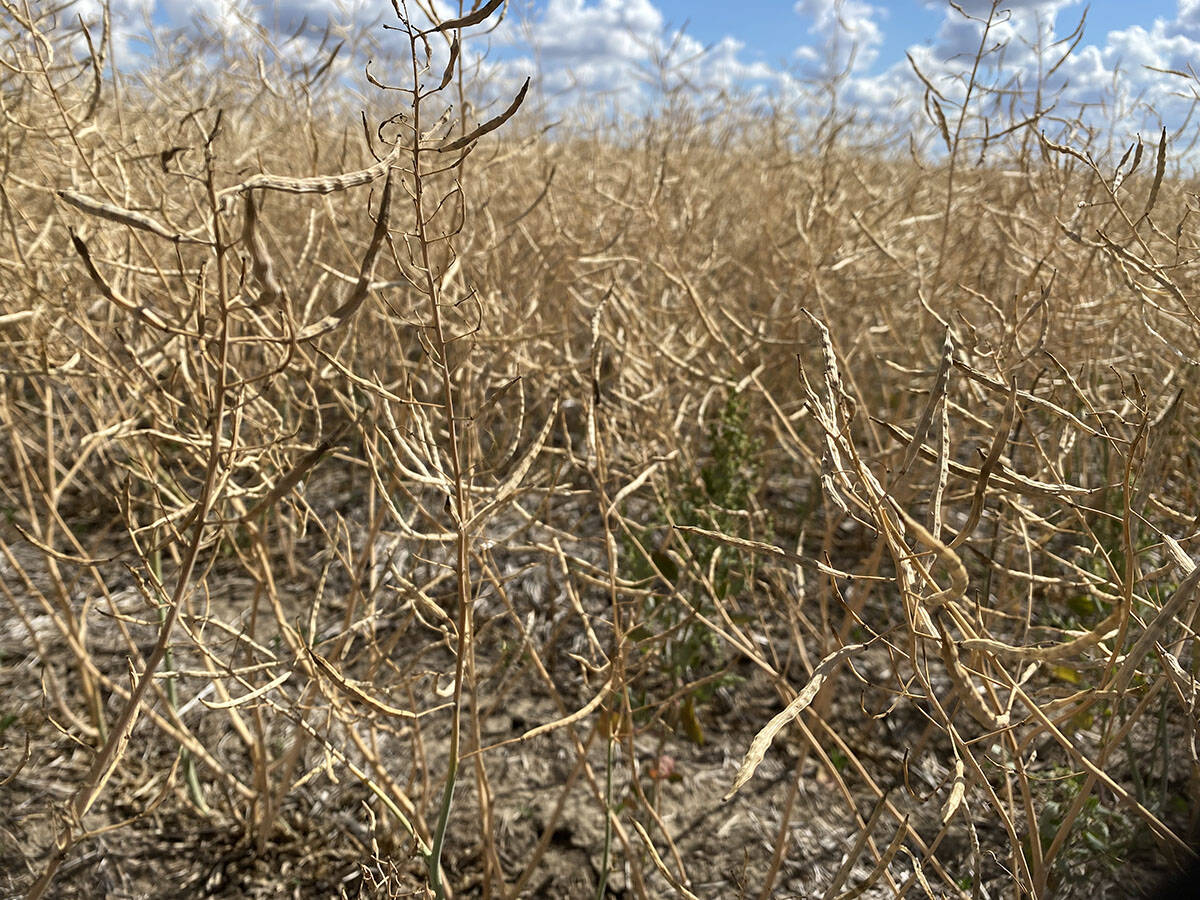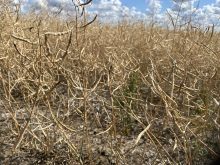Even the best feed contains fungal spores. Under the right conditions of high temperature, high humidity and poor storage conditions, these spores grow into mould colonies. Sometimes the mould is visible, sometimes it isn’t.
Cattle that eat mouldy feed can suffer from reduced milk production and depressed weight gains. Heavy milk producers and animals fed for high rates of gain are particularly susceptible to the negative effects of mouldy feed because mould reduces diet palatability. Their performance suffers because total feed intake drops.
Production losses can also be attributed to the lower energy content of feed contaminated with mould. Heavy mould growth can reduce the energy content of feed by as much as 10 percent.
Read Also

Crop insurance’s ability to help producers has its limitations
Farmers enrolled in crop insurance can do just as well financially when they have a horrible crop or no crop at all, compared to when they have a below average crop
Mouldy feed can also trigger respiratory disorders in cattle. Continuous inhalation of fungal spores can produce an allergic response that mimics pneumonia. This effect is minimized by feeding mouldy forages outdoors.
Mycotoxicosis is the most significant threat. Though some of the metabolites manufactured by moulds, such as penicillin, are beneficial, others, called mycotoxins, are potentially deadly.
The amount of mould in feed is not correlated with the concentration of mycotoxins. In some cases, just a trace quantity of mould can produce a sufficient amount of mycotoxin to cause illness in cattle. In others, even when a large amount of mould is present, mycotoxin levels are too low to cause toxicity.
Dicoumarol, one of the most well recognized mycotoxins, causes sweet clover poisoning. The toxin is produced by mould that usually grows on sweet clover hay or silage and it prevents blood from clotting. Animals suffering from sweet clover poisoning can die from unchecked internal bleeding.
Many mycotoxins induce abortion. They are absorbed from the rumen into the cow’s blood stream and then pass through the placenta to attack the fetus.
Because abortion occurs so early in gestation, many producers are misled into thinking their affected cows are repeat breeders or are open due to infertility. Though it is not always easy to clinically identify mycotoxin-induced abortion, estimates from some U.S. labs suggest that one-third of abortions can be attributed to mycotoxins.
Claviceps purpurea is a mould that releases mycotoxins that cause not only abortion but also gangrene. Claviceps replaces the seed of rye and other grasses. As it grows, it produces mycotoxins called ergot alkaloids, which cause gangrene by constricting the tiny muscles that line blood vessels. Tissues, especially those of the extremities, starve for nutrients and oxygen because their blood supply is cut off.
Cattle exposed to below-freezing temperatures are at particular risk for the effects of ergot poisoning because blood vessels in their extremities are already constricted as the animals shunt warm blood away from extremities to vital internal organs.
Conditions caused by mycotoxins can be distinguished by several key features. These diseases are not passed from one animal to another, they occur as a seasonal outbreak, can be linked to a specific feed and can’t be treated with antibiotics.
The problem is identifying toxic feed. Feed that is obviously mouldy may be safe or dangerous. Feed that has no visible mould is probably safe but could still contain a sufficient amount of mycotoxin to pose a threat to cattle.
Mouldy feed can be tested for mycotoxins. If testing is not an option, a producer can feed it, but should avoid giving it to pregnant cows and heifers.
Mouldy feed can be mixed with mould-free feed to lower the risk of mycotoxicosis. This will dilute the concentration of mycotoxins if they are present.
As well, mouldy feed should initially be fed to a small group. If toxicity does occur, only a few animals will be affected.
Jeff Grognet is a veterinarian and writer practising in Qualicum Beach, B.C.
















